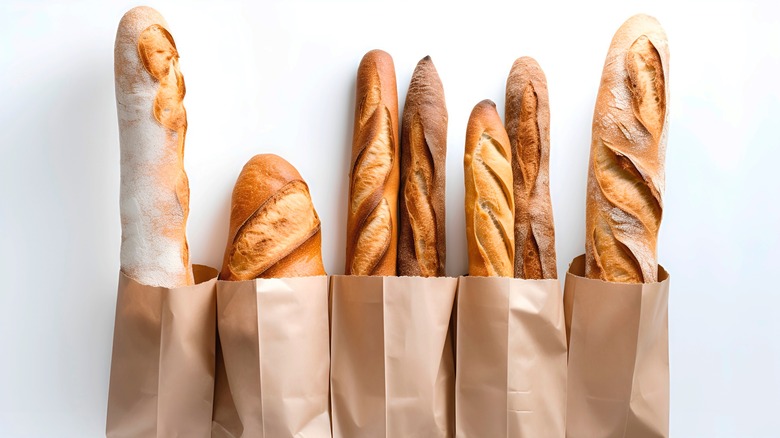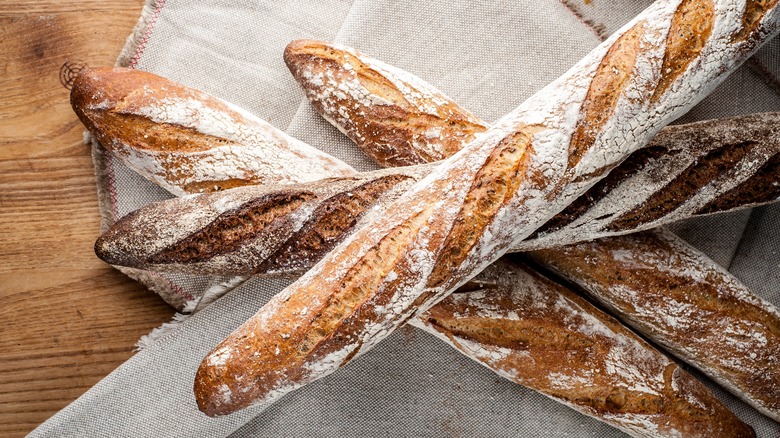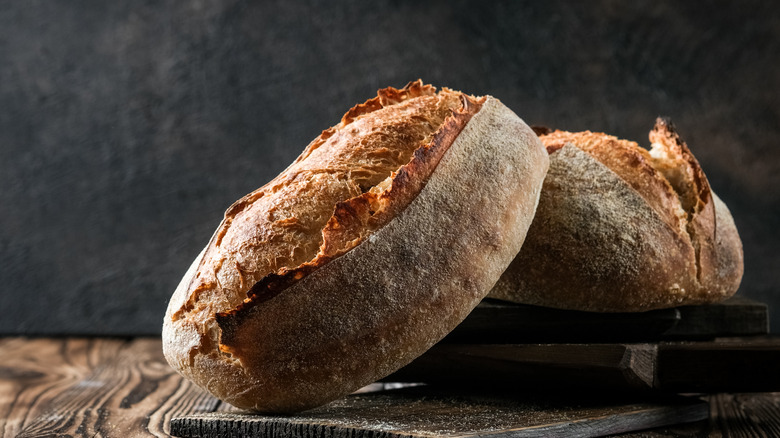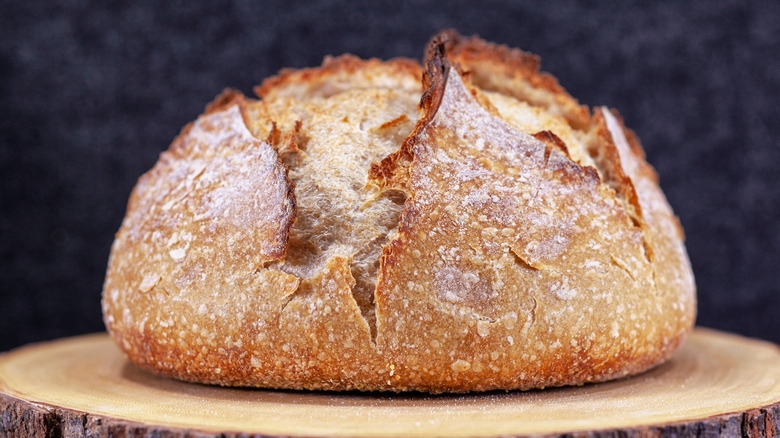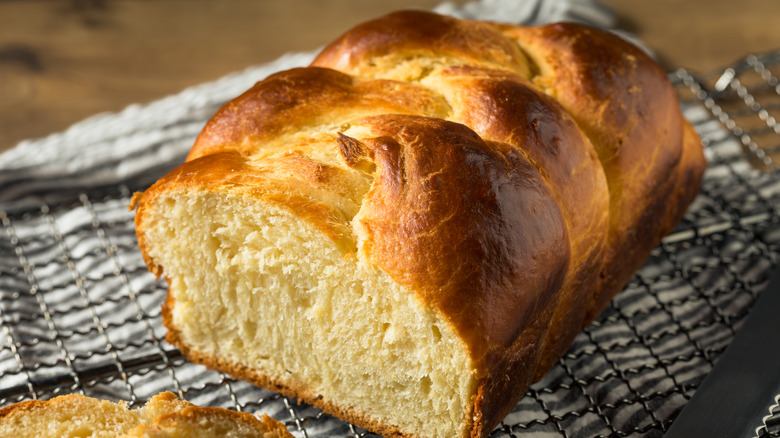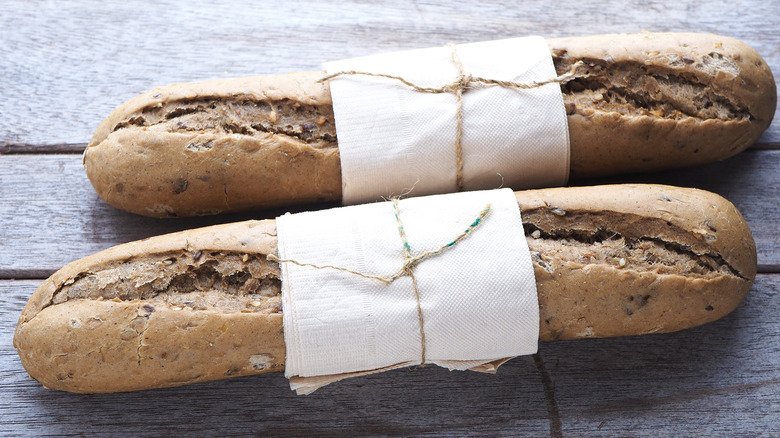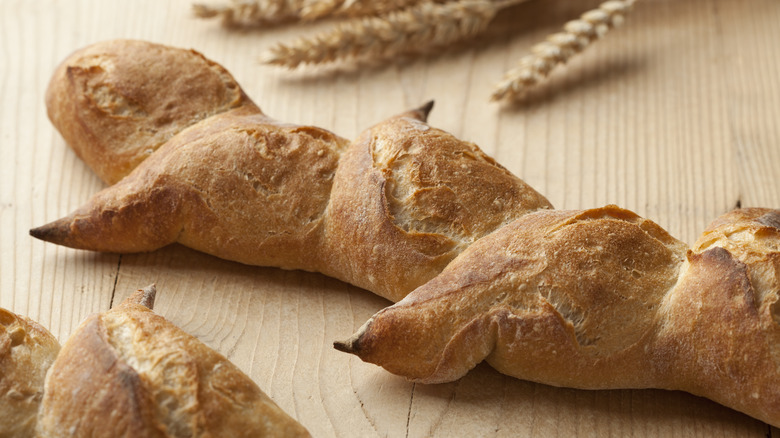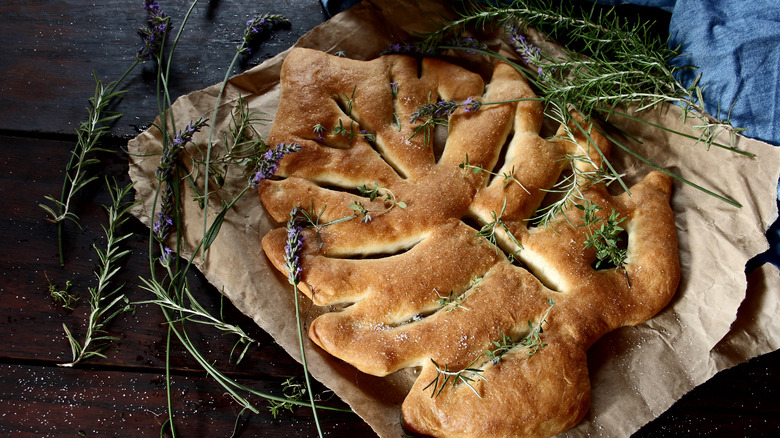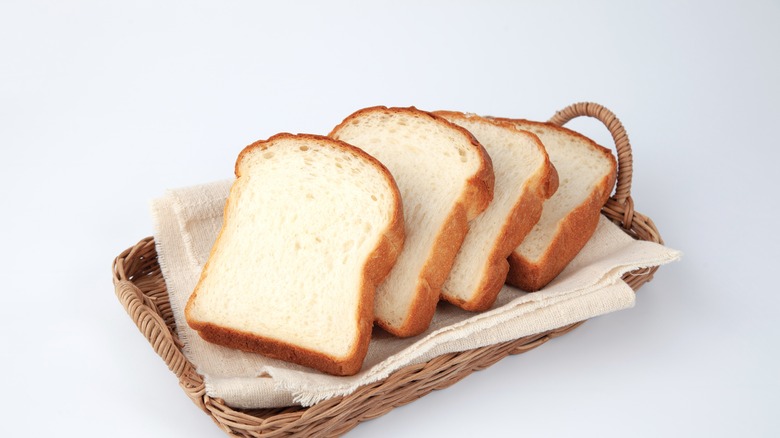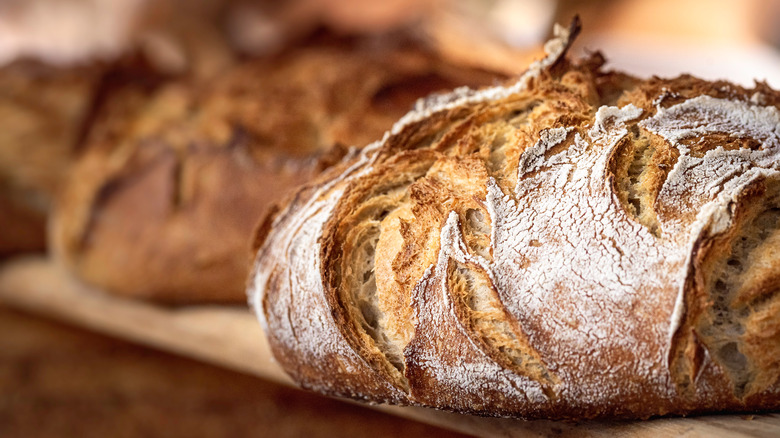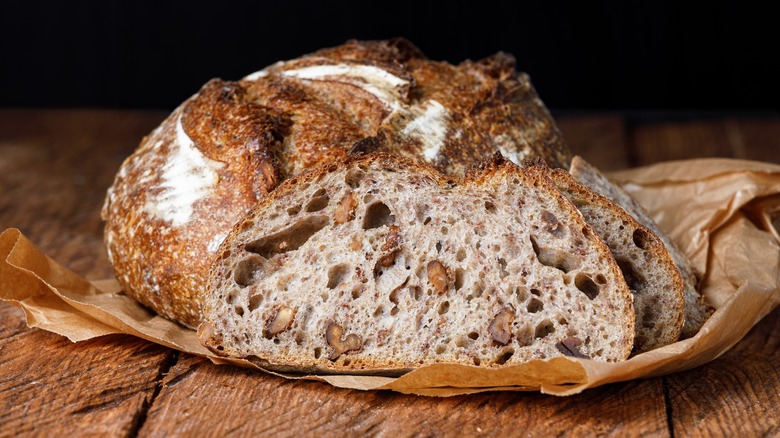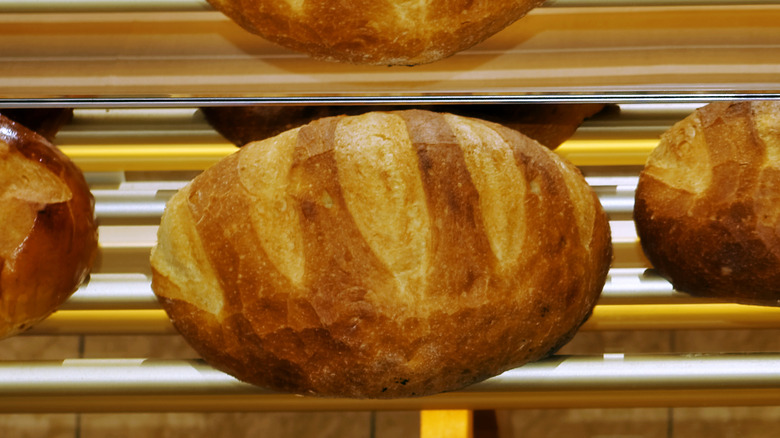11 Types Of French Bread, Explained
Of the many countries whose bread is celebrated globally, France stands out for the wide variety of textures and flavors across its bakery products. The French take pride in their bread, using simple recipes with high-quality ingredients, and this translates into loaves that have a rustic charm as well as a delicious flavor.
From the legendary baguette to the wholesome pain complet, there is a type of French bread to suit every palate. Whether you want something soft with a crunchy crust to accompany your cheeseboard or a hearty slice to dip in a vegetable soup, the diversity of French bread means you won't be disappointed.
If you're worried that you don't know your pain de campagne from your pain de mie, fear not. We will walk you through 11 of France's most popular breads and examine how they differ from each other. Join us as we explore the regional specialties and help you make the perfect choice during your next trip to the bakery.
Baguette
There is no bread more iconic in France than the classic baguette. The long, thin breadstick is as quintessentially French as the Tour Eiffel, and you will pass many people in the streets of Paris with a baguette poking out of their shopping bag. With its golden exterior and fluffy inside, we all know the joy of cracking open a freshly baked baguette, a popularity that has spread far beyond its home country.
Like so many classics, the French baguette is a surprisingly simple bread to bake. By law, French baguettes can contain only flour, yeast, water, and salt. Since additives are not permitted, a French baguette will not remain fresh for more than a day after it is baked.
A French baguette will typically have a diameter of 5 to 6 centimeters and a length of up to a meter, though around 65 centimeters is more typical. The dough is stretched into a long, thin oblong before diagonal scores are added for the signature look, and the bread is baked in the oven for around 20 minutes.
This legendary loaf is versatile to match its flavor, lending itself to so many delicious situations. Whether you want to simply add a smear of French butter or eat it with a wedge of creamy brie, the baguette can be consumed with any meal and will always leave you feeling satisfied.
Pain de campagne
Head to the country for another of France's most famous breads, the pain de campagne. Literally translated as country bread, this loaf is a rustic variety of bread that is beloved around the world.
Pain de Campagne is made in a similar way to sourdough but with added whole wheat and rye flour, which give it a distinctive flavor. Pain de campagne is the ultimate family bread — made in large loaves that will last a few days. It has a chewy crust and fairly dense texture, making it great for soaking up sauces or spreading with chutney before adding some charcuterie on top.
It is the perfect bread for creating a thin, cheesy crouton to sit atop a bowl of piping hot French onion soup, as it will absorb the flavors of the soup without disintegrating. If the weather is too warm for soup, it serves equally well as a summer sandwich, thinly sliced and filled with meats, cheese, and fresh herbs. This versatile bread is a French classic that is bound to satisfy whatever the occasion, from a casual picnic to a fancy dinner party.
Boule
The boule is a classic French bread. Named after its shape — the French word for ball — it is a simple, versatile bread with many uses. Biting into a piece of French boule is a joy: a crispy, crackling crust with a soft, airy inside that doesn't feel too heavy.
The good news is that making a classic boule yourself is easy. You need just flour, yeast, salt, and water. Any easy loaf like this is a great place to start, and baking it means you know exactly what is in the bread you are serving your family. Plus, homemade bread always tastes so much better.
Boule is often served for breakfast in France, as its fluffy interior is less stodgy than some other bread — perfect for starting the day on the right note. It is traditionally topped with butter or jam, and if you want to eat an authentic French breakfast, be sure to dip your bread in your coffee! The thick nature of boule means it lasts longer than thinner loaves such as baguettes, so it should last a few days after you first cut into it. This makes boule a good economical choice, as well as a delicious one.
Brioche
If you're looking for soft and luxurious French bread, brioche should be near the top of your list. With a totally different flavor and texture from most loaves, brioche lies somewhere between bread and cake and can accompany both savory and sweet ingredients.
Brioche is an enriched dough, meaning it contains more ingredients than the standard flour, yeast, and water. Its decadent texture comes from the eggs, butter, cream, and sometimes sugar that are added to make the dough. Once baked, the outside of a brioche loaf has a smooth golden shimmer, while the inside is soft and airy.
The beauty of brioche is that it is equally adept at savory and sweet dishes. It makes delicious French toast with crispy edges and a tender middle or indulgent grilled cheese with gooey cheddar and smoked ham. Brioche burger buns are also a fantastic use of this unique bread, as the sweet flavor of the bread complements the rich burger, while the soft texture of the brioche means the bun will soak up plenty of flavor. For dessert, brioche is destined to be the star of bread and butter pudding. It will soak up the flavored custard brilliantly, creating a sumptuous sweet treat.
Pain complet
A lesser-known bread outside of France, pain complet is a bread that paves the way for a nutritious sandwich. Made from wholewheat flour, rather than the refined white flour that the majority of French bread uses, it has a dense texture and nutty flavor that give it a unique character.
From a health perspective, eating pain complet is a better option than a traditional white baguette. Replacing refined flour with whole grains has been proven to lower the risks of many chronic conditions, including type-2 diabetes and heart disease. They may contain more vitamins, minerals, and fiber, which can all have a significant impact on overall well-being. Although many of us are used to eating white bread and find the heavy texture of wholegrains less pleasant, switching your usual French stick for a pain complet is a switch worth considering.
Beyond the health benefits, pain complet can provide a depth of flavor that may be missing from some of the lighter breads. Its heavy texture makes it perfect for an open-faced sandwich, topped with cream cheese, smoked fish, and pickles, or thin slices of bread for dipping in hummus or guacamole.
Though pain complet may be lacking the fame of its white counterparts, it more than makes up for it in nutrition and character. It proves that bread can be both delicious and healthy, allowing you to enjoy your favorite bread-based treats while still keeping your well-being in mind.
Pain d'epi
Few loaves can compete with pain d'epi when it comes to bread as an art form. Also known as wheat stalk bread, it is shaped to look like a stalk of wheat, resulting in a beautiful plait that gets full marks for presentation.
In terms of flavor, pain d'epi bears a close resemblance to a classic French baguette, as it is made from the four ingredients of white flour, yeast, salt, and water. Where it stands out from the crowd is in the baker's ability to craft it into a wheat stalk, twisting the dough to create 'leaves of wheat' that can be torn off, making it the ideal bread for sharing family style. If you are hosting family for the holidays, you can even get a wreath-shaped version.
Since the dough is essentially the same as a baguette, the pain d'epi has a delicious golden crust with a soft inside, but as it has a larger surface area due to its unusual shape, you will be treated to more of the crunchy crust per loaf. It is the perfect bread for mopping up leftover sauce or dipping in a creamy soup. Next time you need a centerpiece for a dinner party that will get your guests talking, consider an authentic French pain d'epi and enjoy sharing the experience with family and friends.
Fougasse
On the South coast of France, in the heart of Provence, you will find the delightful bread known as fougasse. It is the French cousin of Italian focaccia, with both words originating from the Latin words for baked in a hearth.
This pillowy soft bread has a different texture to most other French breads, with a lovely contrast between the thin, crispy top and the soft center. Unlike focaccia, which is simply cooked in a triangular sheet, fougasse is shaped to resemble an ear of wheat. This unusual shape gives it means more of the dough is exposed to the heat of the oven, and the reward is an increase in the wonderfully crispy edges.
Fougasse can be decorated with various ingredients before being baked, meaning that there are many different versions depending on where you buy it from. Olives, mushrooms, bacon, and cheese are all common additions, but if you are making your own Mediterranean-inspired fougasse, you can add virtually anything you like. There is also a sweet version of fougasse, often sold in Alpine towns. Fougassete has the same texture, but the addition of sugar and orange water makes it an indulgent dessert, especially during the holiday season.
Pain de mie
It may surprise you to find out that the French have soft, white bread served in sliced loaves in every supermarket, and it goes by the name of pain de mie. While our idea of French bread is of the crusty, artisan variety, it turns out that even the sophisticated people of France have a need for a simple sandwich every now and then.
Pain de mie is a simple bread to bake at home, with only a few ingredients: the usual flour, yeast, and salt, but also milk, honey, and vegetable oil to give it a softer texture. It is then baked in a special tin known as a Pullman loaf pan. Its unique feature is a sliding lid that prevents the dough from rising beyond the edge of the tin, creating a neat square shape.
Pain de mie is the ideal bread to create the French classics croque monsieur and croque madame. Literally meaning Mr. and Mrs. Crunch, these legendary sandwiches are the French equivalent of grilled cheese. They contain a luxurious bechamel sauce and, in the case of croque madame, a fried egg on top. The Pain de Mie's soft interior is the perfect vehicle, with the outsides crisping up nicely under the broiler.
Pain au levain
If you like tangy sourdough bread, the French pain au levain will be right up your street. The word levain comes from the French term for the natural fermentation process, which is what gives this sourdough bread its unusual chewy texture and flavor.
Pain au levain is a testament to how simple ingredients plus a lot of patience and baking skill can create a bread with a complex flavor and wonderful texture. By using a slow, natural fermentation process in place of quick-acting yeast, the flavors that develop in the bread are distinctive and delectable.
The benefits of sourdough bread go beyond flavor, as the natural fermentation process comes with access to trace vitamins and minerals, including folate, calcium, and magnesium. The prebiotic effect and lower gluten content of sourdough can also be beneficial for the digestive system. For those who are trying to cut down their bread intake but, still missing their daily sandwich, choosing pain au levain over a classic baguette may be a good compromise.
The texture of pain au levian makes it an incredibly versatile loaf that will serve most of your bread needs. From dunking in a hearty soup to slicing and adding to your cheese board or simply spreading it with butter and enjoying it in the most simple way, the unique properties of pain au levain ensure it will satisfy.
Pain aux noix
Pain aux noix, often known as walnut bread, is a unique bread that takes the slightly nutty flavor of other breads to the extreme. Though usually made with walnuts, pain aux noix can technically contain any nuts, including hazelnuts and almonds. The nuts are roughly chopped and dotted throughout the dough before baking, meaning every few bites will treat you to a jewel.
The best thing about pain aux noix is that it pairs brilliantly with both savory and sweet ingredients, and since it's dense and rich, it has a welcome versatility to pair with various toppings. A tangy goat cheese with spicy tomato chutney will balance out the earthy flavor, whereas topping it with jam or jelly will enhance the natural sweetness of the bread. The versatility of this wonderful bread means it can be your trusty sidekick for both a casual Sunday brunch and a sophisticated dinner party.
Pain brié
In northwest France, in the region of Normandy, you will find a special type of bread with a distinctive look and a memorable taste. Pain brié, also known as Norman bread, is a culinary staple in the region, it's dense texture and rich flavor lending it to many regional dishes.
Pain brié gets its name from the verb 'brier, ' which means to pound. The pounding process is an essential part of developing the unusual structure of this bread, which is dense and firm rather than light and airy. As such, this is much heartier than many other French breads.
Normandy cuisine is known for being indulgent and rich — think cream, butter, and cheese in abundance. This is where pain brié steps up, its robust texture meaning it can mop up creamy sauces without falling apart. Normandy is also known for its PDO cheeses, including camembert and Neufchatel, and pain brié beautifully complements their complex flavors without overpowering them. It is worthwhile trying to get a hold of some the next time you are creating an especially creamy and indulgent French dish.
